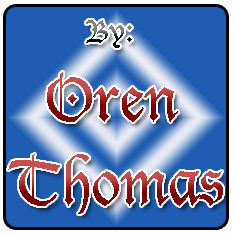Digestive System
The digestive system is a group of organs that work together to break down food into energy for the body to use. There are twelve organs in this system:
- Tongue
- Salivary Glands
- Esophagus
- Stomach
- Liver
- Gallbladder
- Pancreas
- Small Intestine
- Large Intestine
- Appendix
- Rectum
- Anus
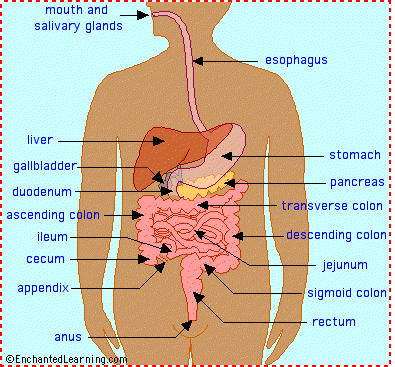
Image from "http://www.enchantedlearning.com/subjects/anatomy/digestive/"
Tongue
The tongue is located in the mouth and is made up of many groups of muscles. It is used to help speak, as well as to help taste and move food around. The tongue tastes by using papillae. Papillae contain taste buds, groups of cells with microvilli on them. Microvilli are small hairs that inform the brain of the taste of the objects on them. Lastly, the tongue moves food into the teeth and back to the esophagus.
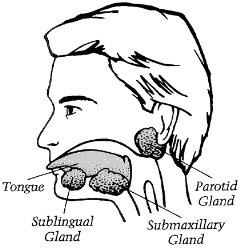
Image from "http://www.orthop.washington.edu/uw/sjogrenssyndrome/tabID__3376/ItemID__55/PageID__4/Articles/Default.aspx"
^ Back to Top ^
Salivary glands
There are six salivary glands in a single human body. They are located in pairs under the tongue, under where the mouth meets the throat, and behind and above where the mouth meets the throat. These glands secrete saliva, a liquid full of enzymes that break down food in the mouth. The salivary glands are activated by the scent and taste of food.
Esophagus
The esophagus is a long pipe that runs from the mouth to the stomach. That is about ten inches. The esophagus’s walls are covered in muscles so it can push food down into the stomach. Additionally, the inside is lined with mucus. The mucus protects the esophagus from sharp objects and stomach acids. Lastly, the tube is stretchy, so it can carry food in almost any shape and size.
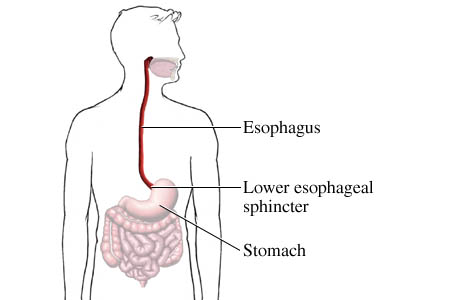
Image from "www.webmd.com/hw/health_guide_atoz/hw141835.asp"
^ Back to Top ^
Stomach
The stomach is a sack-like shaped organ that food goes through immediately after the esophagus. Like the esophagus, it accommodates for food of all sizes by being stretchy. In this way, it can expand from being able too hold 1/5 of a cup to being able to hold 8 cups. Also like the esophagus, it is lined with mucus to protect it from stomach acid and sharp objects. In the stomach, there are liquids called gastric juices. These juices kill bacteria in the food while breaking down proteins. Additionally, the stomach is lined with muscles to break down food, acting the same way as teeth.
Liver
The liver is a boomerang-shaped organ in the digestive system. It is the second largest organ at eight to nine inches wide, the largest being the skin. In addition, it is the largest gland in the body. It also has many functions. One its main functions is to create bile, which is sent into the intestines to help break down fat. The liver also cleans out the blood that passes through it, breaking down alcohol, medication, and other drugs. Lastly, the liver stores some nutrients that come from the small intestines. At the same time, it sends the rest of the nutrients off to the rest of the body.

Image from "www.lifeevents.org/gall-bladder-cleanse.htm"
^ Back to Top ^
Gallbladder
The gallbladder is a small pouch at the bottom of the liver. It holds bile from the liver in storage until it’s needed.
Pancreas
The pancreas is another organ that makes juices for the small intestine. It is located between the stomach and the intestines. It also creates insulin and glucagon to help keep sugar levels balanced.
Small intestine
The small intestine is a long tube, about twenty two feet long when stretched out. However, it is only two inches thick, hence being called the small intestine. It uses bile from the liver to help break down fats. It also continues to break down proteins and anything else the stomach didn’t. The small intestine sends the useful nutrients to the Liver. At the same time, the waste moves on to the large intestine.
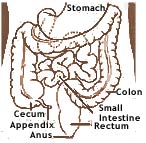
Image from "www.lifeevents.org/gall-bladder-cleanse.htm"
^ Back to Top ^
Large intestine
The large intestine is a long tube, about five feet long. It is about three or four inches thick, and is one of the last parts of the digestive system that food goes through. By the time its here, the food is pretty much just mixed up mushy waste. However, the body can still use some of this. Part of the large intestine, called the colon, extracts as much water as it can from the waste. This waste becomes harder and harder as it moves towards the rectum, at the end of the digestive system.
Appendix
At the very end of the large intestine, there is a small, closed tube a couple of inches long. Currently, it has no function, but some think it is a “remnant of a longer intestine.” Some other animals use it for fermentation. Lastly, humans can sometimes get appendicitis. Appendicitis is a disease in which the appendix swells up from inflammation, and often has to be removed.
Rectum
The rectum is a small area between the large intestine and the anus. Its main function is to store feces until they are ready to be released. When they are, they go on to the anus. By the time waste gets to the rectum, it has no nutrients left. The rectum is the end of the digestive system.
^ Back to Top ^Anus
The anus is where food exits the digestive system, at the end of the large intestine. When it leaves, the food is called feces. The anus is quite simply a small, stretchy hole ringed by a sphincter. A sphincter is a circular muscle that also is found around the eyes and mouth.
